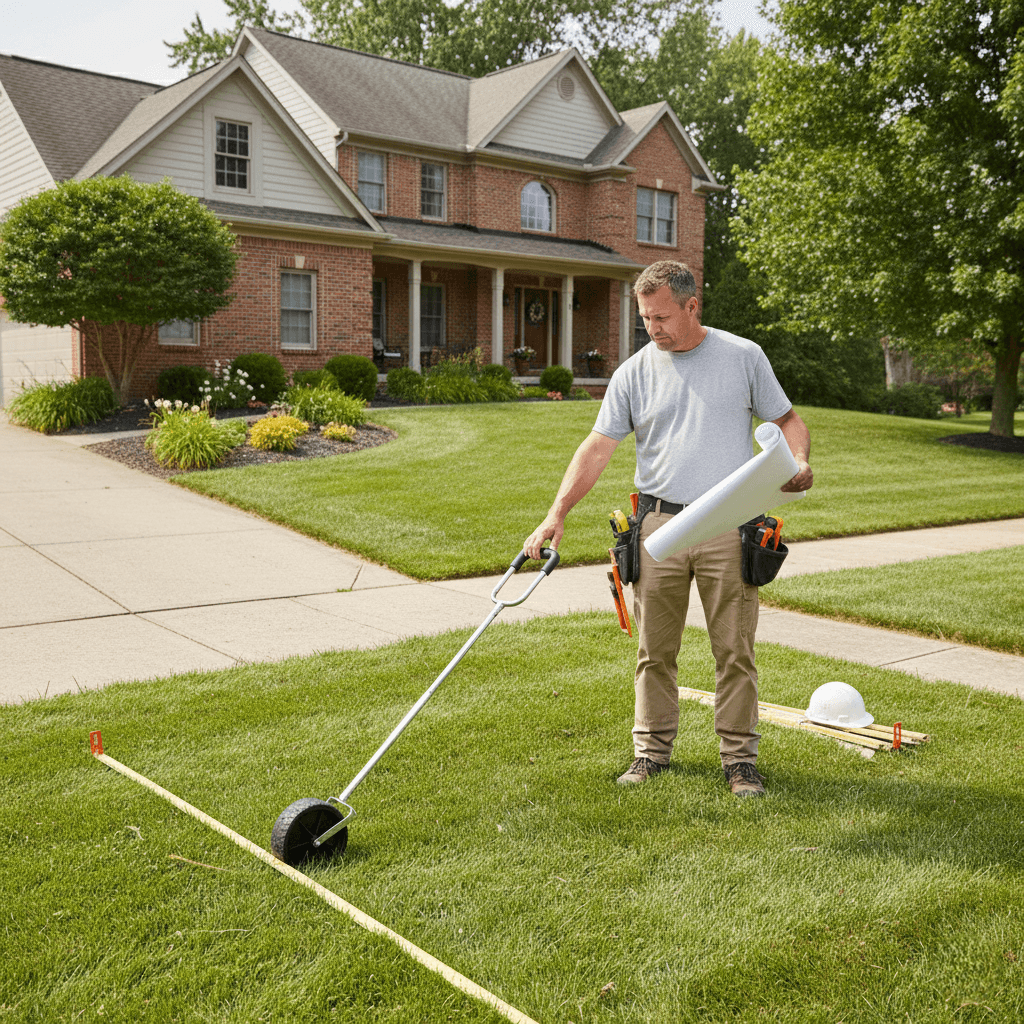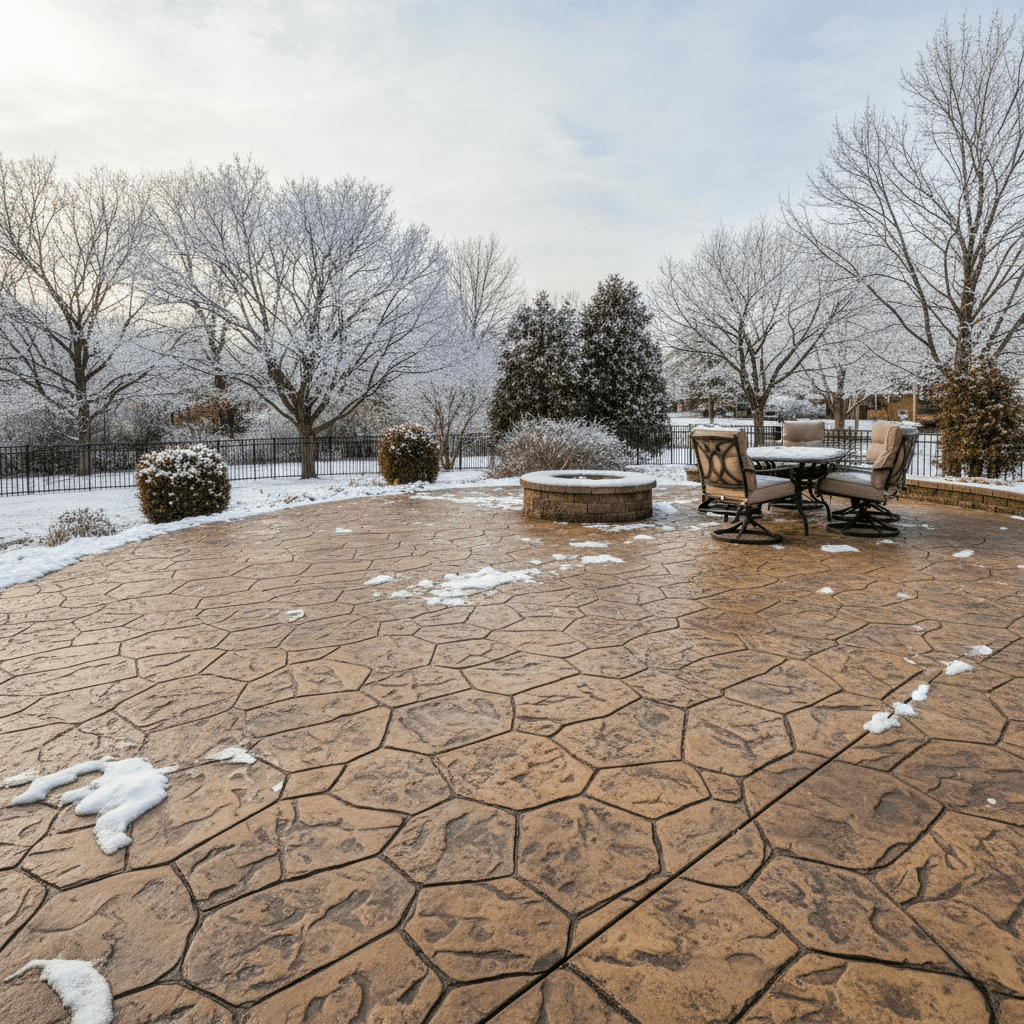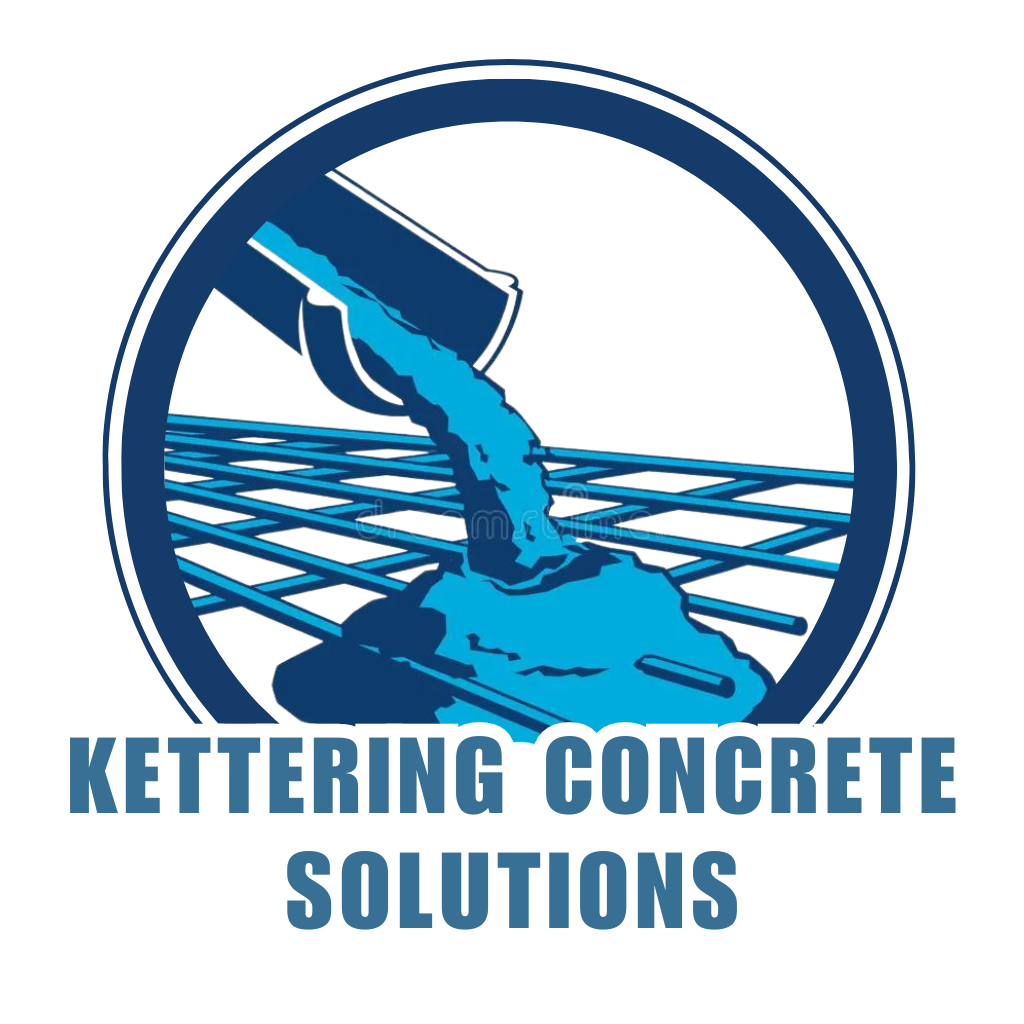
Stamped Concrete in Kettering: Pros & Cons
Stamped Concrete Kettering
Homeowners considering stamped concrete for their Kettering properties must weigh the benefits against climate-specific challenges. Ohio’s continental climate brings temperature extremes ranging from summer highs of 84°F to winter lows of 22°F, creating unique conditions for decorative concrete installations. Understanding how freeze-thaw cycles, moisture levels, and seasonal temperature variations affect stamped concrete performance helps ensure successful long-term results. Professional installation techniques and proper maintenance protocols can maximize durability while minimizing weather-related issues.

Key Advantages of Stamped Concrete
Stamped concrete offers exceptional design versatility that appeals to homeowners throughout Kettering’s diverse neighborhoods. Modern stamping techniques replicate natural stone, brick, wood, and tile patterns with remarkable accuracy. Color options range from subtle earth tones to bold architectural statements, allowing seamless integration with existing landscape designs.
Cost-effectiveness represents another significant advantage over natural materials. Professionally installed stamped concrete typically costs 40-60% less than natural stone or brick alternatives while providing similar aesthetic appeal. Installation time remains considerably shorter than individual paver or stone placement, reducing project disruption and labor costs.
Durability and Structural Performance
Properly installed stamped concrete provides excellent structural integrity for Ohio’s climate conditions. Modern concrete formulations with appropriate air entrainment resist freeze-thaw damage that commonly affects other materials. Quality installations near Delco Park and surrounding areas demonstrate decades of reliable performance with minimal maintenance requirements.
Load-bearing capacity exceeds most alternative materials, making stamped concrete ideal for driveways and high-traffic areas. Unlike segmented pavers that can shift or settle, monolithic concrete construction maintains consistent surface levels. Professional color hardeners increase surface density, improving resistance to wear and weathering.
Low Maintenance Requirements
Maintenance demands remain minimal compared to other decorative paving options. Regular cleaning with standard pressure washing removes accumulated dirt and organic matter. Periodic resealing every 2-3 years maintains color vibrancy and surface protection without requiring specialized equipment or materials.
Weed control issues that plague paver installations become non-existent with continuous concrete surfaces. Snow removal operations proceed smoothly without concerns about displacing individual units or damaging joint materials. Salt and deicing chemical resistance proves superior to natural stone alternatives.
Climate-Related Limitations
Freeze-Thaw Cycle Challenges
Kettering’s climate creates approximately 100-120 freeze-thaw cycles annually, presenting the primary challenge for stamped concrete installations. Water infiltration through microscopic cracks or inadequate sealing can cause internal pressure as freezing occurs. This expansion stress may result in surface scaling, spalling, or crack propagation over time.
Color hardener systems used in stamping can increase surface density but may also reduce permeability. Trapped moisture beneath hardened surfaces becomes problematic during freeze cycles. Professional installations must balance surface hardness with adequate moisture vapor transmission to prevent internal pressure buildup.
Thermal Expansion and Contraction
Temperature swings from -5°F to 91°F create significant thermal movement in concrete slabs. Stamped patterns with deep impressions concentrate stress at pattern edges, potentially creating crack initiation points. Control joint placement becomes critical for managing thermal stresses while maintaining pattern integrity.
Dark-colored stamped surfaces absorb more solar radiation, creating higher surface temperatures and increased thermal differential. Light-colored patterns help minimize thermal stress but may show dirt and staining more readily. Professional design must consider orientation, shading, and color selection for optimal performance.
Moisture Management Considerations
Ohio’s average annual precipitation of 25 inches, combined with snow accumulation, requires careful moisture management strategies. Proper surface drainage prevents standing water that accelerates freeze-thaw damage. Stamped patterns must avoid creating low spots where water can collect and freeze repeatedly.
Humidity levels throughout Kettering’s climate zones affect curing conditions and long-term performance. Summer humidity reaching 82% can slow moisture evaporation from new installations. Winter conditions with rapid temperature changes may cause surface crusting if curing protection proves inadequate.
Seasonal Installation Constraints
Installation windows become limited during extreme weather periods. Temperatures below 40°F require special cold-weather concrete admixtures and extended protection periods. Stamping operations become difficult when ambient temperatures affect working time and pattern definition.
Spring installations near Indian Riffle Park and similar locations must account for soil conditions and groundwater levels. Fall projects require completion before sustained freezing temperatures arrive. Summer heat can accelerate setting times, demanding experienced crews for optimal results.
Sealing and Protection Requirements
Proper sealing becomes essential for stamped concrete performance in Kettering’s climate. Quality acrylic or polyurethane sealers provide moisture barrier protection while allowing vapor transmission. Application timing proves critical, requiring dry conditions and appropriate temperatures for optimal penetration and curing.
Sealer selection must balance appearance enhancement with protective performance. Film-forming sealers provide excellent moisture protection but may become slippery when wet. Penetrating sealers offer better slip resistance but require more frequent reapplication for optimal protection.
Winter Protection Strategies
Deicing chemical exposure presents ongoing challenges for stamped concrete surfaces. Sodium chloride and calcium chloride can penetrate concrete pores, contributing to freeze-thaw damage acceleration. Sand or calcium magnesium acetate provides safer alternatives for ice control on decorative surfaces.
Snow removal techniques must avoid aggressive scraping that can damage sealed surfaces or stamped patterns. Plastic shovels and rubber-edged plows prevent surface scratching while maintaining safe conditions. Prompt snow removal reduces freeze-thaw cycle intensity and frequency.
Design Considerations for Local Climate
Pattern selection significantly influences long-term performance in Ohio’s climate. Shallow textures with minimal relief provide better freeze-thaw resistance than deeply embossed patterns. Stone and slate textures typically perform better than wood grain patterns that create deep grooves for water accumulation.
Drainage integration becomes paramount for successful installations. Proper slopes direct water away from structures while maintaining pattern aesthetics. Strategic placement of control joints disguises necessary thermal movement accommodation within decorative designs.
Color and Finish Selection
Integral coloring provides superior fade resistance compared to surface-applied color systems. Earth tones and grays hide minor surface wear better than lighter colors while maintaining heat reflection benefits. Multiple color applications create realistic variation while disguising minor maintenance issues.
Surface finish texture affects slip resistance and cleaning ease. Moderate textures provide good traction without creating excessive maintenance challenges. Smooth finishes may become slippery when wet, but clean more easily during routine maintenance procedures.
Long-Term Performance Expectations
Realistic performance expectations help homeowners make informed decisions about stamped concrete investments. Quality installations typically provide 15-25 years of excellent appearance with proper maintenance. Some surface wear and minor crack development should be expected in Ohio’s challenging climate conditions.
Comparison with alternative materials reveals stamped concrete’s competitive advantages. Natural stone installations often experience settling and joint deterioration within 10-15 years. Pavers may require releveling and joint sand replacement every 3-5 years in freeze-thaw climates.
Maintenance Scheduling
Proactive maintenance schedules maximize stamped concrete’s lifespan and appearance. Annual cleaning and inspection identify minor issues before major repairs become necessary. Crack sealing and spot sealer reapplication prevent moisture infiltration and freeze-thaw damage progression.
Seasonal maintenance tasks include pre-winter surface preparation and post-winter damage assessment. Spring cleaning removes deicing residues and winter debris accumulation. Fall preparation includes thorough cleaning and sealer inspection before freeze-thaw season begins.
Cost-Benefit Analysis
Initial installation costs for stamped concrete range from $8-$15 per square foot, depending on pattern complexity and color requirements. This compares favorably to natural stone installations costing $15-25 per square foot. Long-term maintenance costs remain significantly lower than those of alternative materials.
Property value enhancement justifies stamped concrete investment for most homeowners. Attractive outdoor living spaces increase marketability and buyer appeal throughout Kettering’s residential markets. Quality installations provide excellent return on investment over their service life.
Lifecycle Cost Considerations
Total ownership costs include initial installation, routine maintenance, and eventual replacement or major restoration. Stamped concrete typically requires major restoration after 20-25 years compared to 10-15 years for other decorative materials. Annual maintenance costs average $0.50-1.00 per square foot.
Energy efficiency benefits include reduced irrigation requirements and heat island effect mitigation. Light-colored stamped surfaces reflect more solar radiation than dark asphalt alternatives. Improved drainage reduces standing water and mosquito breeding areas around homes.
Professional Installation Importance
Climate-appropriate installation techniques prove essential for long-term success in Kettering’s conditions. Experienced contractors understand local soil conditions, drainage requirements, and weather patterns affecting concrete performance. Proper mix design, air entrainment, and curing procedures ensure optimal freeze-thaw resistance.
Quality control during installation includes temperature monitoring, proper timing of stamping operations, and appropriate curing protection. Professional contractors coordinate weather forecasts with project scheduling to avoid adverse conditions. Warranty coverage protects homeowners against installation defects and premature failures.
Contractor Selection Criteria
Successful stamped concrete projects require contractors with extensive local experience and proven track records. References from recent installations near areas like the Kettering Recreation Complex demonstrate contractor capabilities in similar conditions. Licensing, insurance, and manufacturer certifications ensure professional standards and warranty protection.
Portfolio review reveals contractor expertise with specific patterns, colors, and installation challenges. Written proposals should detail mix design specifications, sealing systems, and maintenance recommendations. Clear communication about realistic expectations and maintenance requirements prevents future disappointments.
Future Considerations and Innovations
Advancing concrete technology continues to improve stamped concrete performance in challenging climates. Enhanced admixture systems provide better freeze-thaw resistance while maintaining workability for stamping operations. Improved sealer formulations offer longer service life and better protection against moisture infiltration.
Environmental considerations favor stamped concrete over quarried stone materials that require significant transportation and processing energy. Locally produced concrete reduces carbon footprint while supporting regional economic development. Permeable stamped concrete systems address stormwater management requirements in new construction.
Kettering Concrete Solutions provides comprehensive stamped concrete services that account for our region’s unique climate challenges. Our approach combines proven installation techniques with innovative materials and maintenance strategies to deliver exceptional results that withstand Ohio’s demanding weather conditions year after year.


